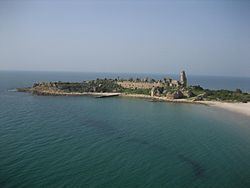District Haifa Population (2015) 6,818 Local time Wednesday 2:11 AM | Council Hof HaCarmel Founded 1903 | |
 | ||
Grid position formerly 144/234, now 144/232 PAL Founded by Edmond James de Rothschild Weather 19°C, Wind E at 21 km/h, 48% Humidity Founder Edmond James de Rothschild Points of interest Atlit Beach, Khirbet Carta, יקב שושנה | ||
Atlit (Hebrew: עַתְלִית) is a coastal town located south of Haifa, Israel. Originally an outpost of the Crusaders, it fell in 1291. The Jewish village was founded in 1903 under the auspices of Baron Edmond de Rothschild. In 2015 the population was 6,818. The Atlit detainee camp is nearby.
Contents
- Map of Atlit Israel
- History
- Ottoman era
- British Mandate era
- State of Israel
- Neighborhoods
- Twin towns
- References
Map of Atlit, Israel
History
Atlit Yam is an ancient submerged Neolithic village off the coast of Atlit, Israel. Atlit-Yam provides the earliest known evidence for an agro-pastoral-marine subsistence system on the Levantine coast.
Atlit shows evidence of human habitation since the early Bronze Age. The Crusaders built Chateau Pelerin, one of the largest citadels in the Holy Land, and one of the last remaining Crusader outposts to withstand the assaults of Baibars (see also: Fall of Ruad). Atlit remained in Crusader hands until 1291. The ruins of the citadel are still visible in modern times. In 1296, during Mamluk rule, Atlit and its surrounding area was settled by members of the Tatar 'Uwayrat tribe.
Ottoman era
In 1596, during Ottoman rule which began in 1517, Atlit was recorded as a farm that paid taxes to the government.
During the rule of Acre governor Sulayman Pasha al-Adil, Atlit was the headquarters of local strongman Mas'ud al-Madi, who was appointed the mutasallim (tax collector/enforcer) of the Atlit coast, which consisted of the territory that stretched from Umm Khalid to Haifa. In 1859, the population was stated to be "180 souls", and their tillage 13 feddans, according to the English consul Rogers.
An Ottoman village list of about 1870 showed that Atlit had 9 houses and a population of 33, though the population count included men only. In 1881, the Palestine Exploration Fund's Survey of Western Palestine noted the existence of a small Arab village. In 1903, Jewish settlers built a nearby village which they also called Atlit; The village was established by Edmond James de Rothschild, with most of the land bought from Arab fishermen. Aaron Aaronsohn established an agricultural station in Atlit in 1911, and during World War I the village was used as a base by the Nili organisation.
British Mandate era
In the 1922 census of Palestine, during the British Mandate of Palestine period, Athlit had a population of 81; all Muslims, while Athlit Colony had a population of 78 Jews and 3 Muslims. Athlit Salt works had a population of 196 Jews, 1 Muslim and 1 Christian. This had increased in the 1931 census to 413 Muslim, 496 Jews and 39 Christians; in a total of 193 houses.
In 1938 there were 508 Arabs and 224 Jews. The Arab presence underwent a sharp decline in the 1940s due to land sales, so that by 1944/5 there were only 150 Arabs still living there (90 Muslims and 60 Christians) alongside 510 Jews.
State of Israel
The circumstances under which the remaining Arabs left in 1948 are unknown. Atlit detainee camp was used by the British authorities to detain Jewish immigrants to Palestine. It is now a museum of the Ha'apala. A base of Israel's naval commando is located nearby.
Atlit was declared a local council in 1950, but in 2004 was incorporated in the Hof HaCarmel Regional Council as one of a handful of Regional Committees. The late Knesset member Pesah Grupper lived in Atlit. He was head of its local council in the years 1959–1962 and 1969–1971.
Neighborhoods
Neighborhoods in Atlit are Neve Moshe, Yamit, Giv'at HaPrahim, Giv'at HaBrekhot, Giv'at Sharon, Shoshanat HaYam, HaGoren, Yafe Nof, Argaman, Hofit, Savyonei Atlit and Allon. Atlit is in immediate vicinity of the villages Neve Yam and Ein Carmel.
